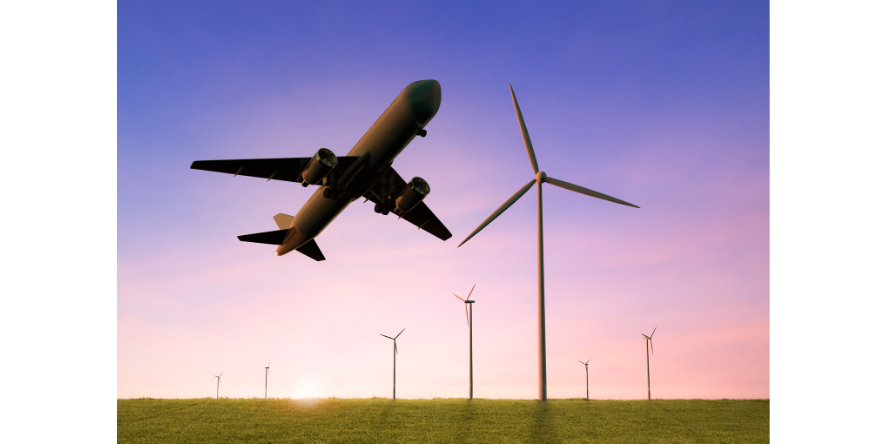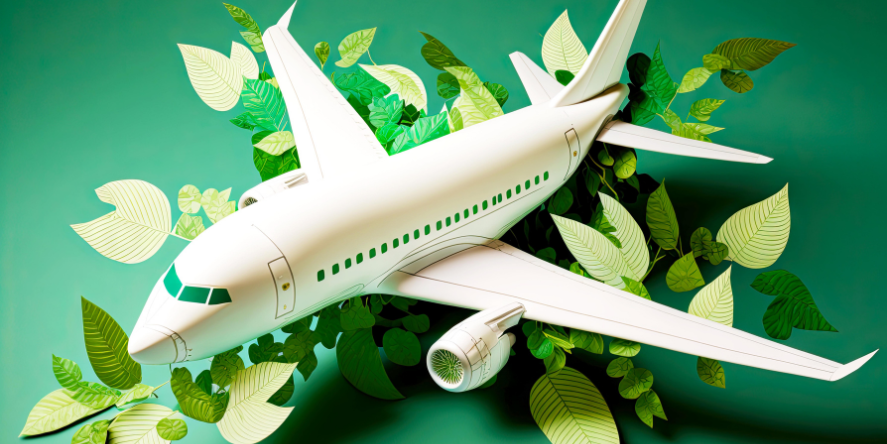The aviation industry has long been under scrutiny for its significant contribution to global carbon emissions. With air travel becoming increasingly prevalent, it has become the fastest-growing source of greenhouse gas (GHG) emissions, driving global climate change. As other industries are making significant contributions to reducing their environmental impact, aviation’s share is expected to continue growing in the upcoming years. In response to this situation, the aviation industry is turning its attention to sustainable aviation fuel (SAF) as a major solution for reducing its carbon footprint. With the potential to reduce CO2 emissions by up to 80%, SAF offers a promising path towards a greener future for air travel.
The Rise of Sustainable Aviation Fuel
As the push for decarbonisation intensifies, the aviation industry is actively seeking ways to reduce its environmental impact. One of the key strategies is the adoption of sustainable aviation fuel.
So, what is SAF?
Sustainable aviation fuel is a cleaner alternative to conventional jet fuel. Unlike traditional jet fuel derived from fossil sources, it is produced from various sources such as waste oils, fats, feedstocks, and other suitable raw materials, making it a renewable and environmentally friendly alternative. It doesn’t compete with food crops or water resources, and it doesn’t contribute to deforestation. The process of manufacturing SAFs typically involves converting these feedstocks into liquid fuels that can be used to power aircraft. The SAFs can be blended at various levels, with limits ranging from 10–50% depending on the feedstock and the process of manufacture.

With the increase in demand, the production of SAF has been steadily increasing, with volumes expected to rise even further in the coming years. In 2021, somewhere between 300 and 450 million litres (approximately 80 to 118 million gallons) of SAF were produced, marking a significant increase from previous years. This upward trend is expected to continue, with the International Air Transport Association (IATA) projecting SAF to become a primary tool for achieving net-zero emissions in the aviation industry by 2050.

The importance of the transition to greener fuel:
An aeroplane’s CO2 emissions are around 100 times higher than a bus or train ride. A return flight between London and San Francisco has a carbon footprint per economy ticket of nearly 1 tonne of CO2. These high emissions necessitate an immediate plan of action to transition to a greener option. Sustainable aviation fuel has the potential to produce cleaner combustion, leading to improved air quality around airports and in the atmosphere. SAF can lower emissions by up to 80% compared to conventional jet fuel. This reduction is achieved through the use of renewable feedstocks and advanced manufacturing processes that minimize carbon output. By transitioning to SAF, airlines can make substantial strides towards their sustainability goals and contribute to global efforts to combat climate change.
Overcoming challenges:
Before we jump to the conclusion and state that SAF is the only carbon-free option that can be implemented, we need to address the challenges associated with it. The aviation world is still adjusting to transitioning from traditional to green fuel; there is still a long way to go. Only 2.5 percent of the total flights are currently flying, which uses the SAF to carry out its operations. Several pacts are being signed to buy SAF, but its use is not very prevalent, as only 0.1% of total aviation fuel is in use.
So why is it not being used widely? Some of the major obstacles include the cost of production, the implementation of new technologies, and the production method. SAFs aren’t yet cost-effective with traditional jet fuel; the former is four times as expensive as the latter. The manufacturing cost at present is much higher than that of kerosene. So the only option to cut costs would be scaling up. What better example than solar energy, which once was super expensive and could be used only on satellites, but today its use is quite cosmopolitan.

The road ahead:
Despite these challenges, the aviation industry is making strides towards a more sustainable future with the increasing adoption of sustainable aviation fuel. Governments, airlines, and industry stakeholders are recognising the need for the initiative. Major airlines and fuel suppliers have announced multiple partnerships for the trial of SAFs. Governments all around the world should incentivize the production for a more incessant use. Additionally, collaboration among airlines, fuel producers, and research institutions is essential for developing and implementing sustainable aviation fuel technologies.
The transition to sustainable aviation fuel represents a critical step in making air travel more environmentally friendly, ensuring a cleaner and more sustainable future for the aviation industry and the planet as a whole. Combined with innovative aircraft designs like the blended wing body, the industry has the potential to achieve its sustainability goals and usher in a new era of greener and more sustainable air travel. As governments, airlines, and fuel producers continue to invest in research and development, the widespread adoption of sustainable aviation fuel is within reach, bringing us closer to a carbon-neutral future for the aviation industry.


















